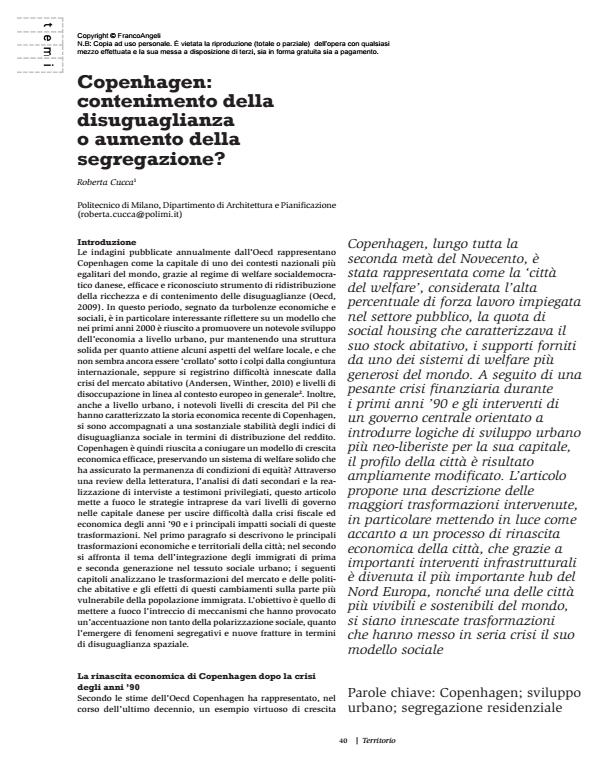Copenhagen: contenimento della disuguaglianza o aumento della segregazione?
Titolo Rivista TERRITORIO
Autori/Curatori Roberta Cucca
Anno di pubblicazione 2012 Fascicolo 2012/61
Lingua Italiano Numero pagine 7 P. 40-46 Dimensione file 1592 KB
DOI 10.3280/TR2012-061006
Il DOI è il codice a barre della proprietà intellettuale: per saperne di più
clicca qui
Qui sotto puoi vedere in anteprima la prima pagina di questo articolo.
Se questo articolo ti interessa, lo puoi acquistare (e scaricare in formato pdf) seguendo le facili indicazioni per acquistare il download credit. Acquista Download Credits per scaricare questo Articolo in formato PDF

FrancoAngeli è membro della Publishers International Linking Association, Inc (PILA)associazione indipendente e non profit per facilitare (attraverso i servizi tecnologici implementati da CrossRef.org) l’accesso degli studiosi ai contenuti digitali nelle pubblicazioni professionali e scientifiche
Throughout the second half of the 20th century, Copenhagen was represented as the ‘welfare city’, in consideration of the high percentage of the labour force employed in the public sector, the share of social housing that characterized its housing stock and the support furnished by one of the most generous welfare systems in the world. Following a substantial financial crisis in the early 1990s and action taken by a central government ori¬ented towards introducing a more neo-laissez-faire idea of urban development for its capital, the profile of the city was greatly modified. This paper describes the major transformations that have occurred, and in particular sheds light on how, alongside a process of economic rebirth of the city, which thanks to major infrastructural interventions became the most important hub in Northern Europe as well as one of the most liveable and sustain¬able cities in the world, transformations were begun that created a serious crisis for its social model.
Parole chiave:Copenhagen; urban development; residential segregation
Roberta Cucca, Copenhagen: contenimento della disuguaglianza o aumento della segregazione? in "TERRITORIO" 61/2012, pp 40-46, DOI: 10.3280/TR2012-061006